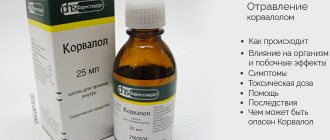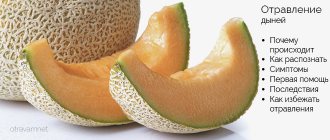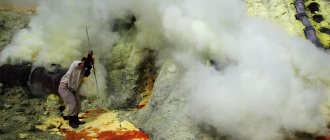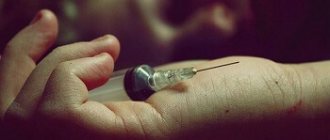Our world is rich and diverse with various living beings. They inhabit almost every square centimeter of planet Earth, and are endowed with certain functions and tasks. Nature has taken care of the balance of all living things, which is why organisms adapt to life and survival in their own way, using their natural capabilities.
The only enemy of nature, in the process of evolution, has become man . With his rude, greedy actions, invading and upsetting the balance in the lives of many living beings. Consequently, organisms also need to have protection to resist people. In some species, in the process of evolutionary development, fangs, spines, poison appeared, some changed color, shape, size. After which, people began to fear many people and think about the consequences of meeting these animals.
One such representative of the animal world is the scolopendra . Now, this poisonous animal can cause a lot of problems to its offender, but many, many thousands of years ago, it was harmless.
Symptoms
Some people report “extreme pain,” others say it is no more painful than a wasp sting. At the site of the bite, you may see:
- Two puncture wounds, one from each of the modified legs' claws;
- Pain in the bite area, redness and localized swelling.
Learn More Surprising Facts About the Queen Ant
While the pain can last anywhere from a few hours to a few days—some liken it to a bee or wasp sting—there can also be more serious symptoms:
- Severe itching, headache, swollen lymph glands, dizziness, nausea, palpitations, anxiety, increased blood pressure;
- Local tissue damage;
Scolopendras are poisonous. This poison is found only among them.
- Lymphadenopathy (rare).
- Numbness in the bite area (rare).
- Labored breathing.
In addition to a scolopendra bite, it is possible to receive small puncture wounds containing venom where it has crawled across the skin. Blisters may appear on the affected areas of the skin.
Types of predators
Varieties of centipedes Typical representatives of this order of centipedes are the ringed centipede, Californian centipede and Lucas centipede. But there are other varieties of these predators, which are their closest relatives.
- Californian. It is green in color and is classified as a giant, as its body size reaches 20 centimeters. Lives in arid regions of Mexico and the USA. Whether scolopendra is dangerous for humans in normal conditions can be seen by observing the predator in the wild. In a calm environment, the centipede does not pose any threat, but in case of danger, running its numerous legs over a person’s skin causes inflammation at the site of contact. For all time, only one death of a seven-year-old child in the Philippines from the bite of this poisonous centipede has been recorded.
- Ringed centipede. Found in Mediterranean countries, Southern Europe, North Africa, and the southern region of Russia. It is widespread in Crimea. The body length is from 14 to 17 centimeters. Scolopendra is painted in a beautiful golden yellow color, but is also poisonous, like its relatives.
- Vietnamese. This representative is distinguished by the secretion of a luminous liquid that smells of phosphorus, which severely burns the skin and causes inflammation. The bite of the Scolopendra subspinipes insect produces a wound up to 1.5 cm in diameter and 5 mm in depth. The toxin is similar in action to viper venom. The wound bleeds for a long time, since a special substance is injected along with the poison that prevents blood clotting. There is an increase in temperature to 39-40 degrees and an increase in the bitten limb several times. The injured person must be immediately given an antiallergic drug and taken to the nearest hospital.
- African scolopendra. She can make noise with her hind legs in the form of chirping and crackling noises to scare away enemies. The individuals themselves do not react to this sound in any way.
- Blind, poisonous centipedes, Cryptops, live in the upper layers of the soil. They, like moles, practically never appear on the surface. These small yellow-brown scolopendras, 3–4 cm long, can be found in steppe regions and in garden plots even in Moscow latitudes. They do not pose a danger, since the weak jaw apparatus cannot bite through human skin. In the tropics there are various species of these insects, which are colored in different colors, ranging from green to purple hues.
- Drupes (Lithobiomorpha) are small relatives of centipedes. They can accidentally get into the stomach with fruit or crawl into a sleeping person’s nose or ear, but this happens very rarely. Mainly found in cities near damp foundations.
- The Scutigera coleoptrata has 15 pairs of long legs and long antennae. Scolopendra is a nocturnal insect, but this species can be seen during the day on the wall of a house. Preys on flies and other small insects. It tolerates dry air best of all species, although in the hottest daytime it tries to hide in shelter. Scolopendra of this species is able to be active at lower temperatures, which provides it with advantages in hunting over other insects. Today it is rarely seen in Crimea. The black scolopendra also belongs to the scutiger class.
What to do if you are bitten by a scolopendra
First aid for a centipede bite is that you should immediately wash the affected area with plenty of water and soap to minimize the possibility of infection.
DO NOT use alcohol to clean the bite area.
Rinse eyes with plenty of water if poison gets into them.
You can apply ice (wrapped in a clean cloth) on the wound (10 minutes), then repeat this process after 10 minutes.
If a person has problems with blood circulation, the time should be reduced to prevent possible damage to the skin. It is recommended to apply a cool, damp bandage and apply a local anesthetic to the bite site to relieve pain.
Also, local application of heat or immersion of the bitten part of the body in hot water is more preferable. This may be explained by the properties of the thermolabile components of the poison.
Antihistamines are used to relieve symptoms (such as intense itching).
A trip to the emergency room may not be necessary if the person does not have allergic reactions. In cases of more severe symptoms, medical attention should be sought. For example, to cleanse a wound and prevent tetanus.
Despite the striking appearance of the offender and the significant pain associated with a scolopendra bite, first aid and further treatment essentially boil down to pain control and daily wound care.
Briefly about centipedes and their relationship with humans
Scolopendras are representatives of millipedes, united in a separate group Scolopendromorpha. The name has ancient Greek roots, the translation means woodlice, centipede. The food for the predator is insects and small invertebrates. However, large specimens (up to 26 cm), inhabitants of tropical forests, hunt:
- reptiles (snakes, frogs, lizards);
- spiders (including poisonous tarantulas);
- small rodents, bats.
Often the prey of giant centipedes can be larger than the centipede itself.
Such active predation was made possible thanks to a strong poison that has a paralytic effect. An insect can sting if it feels threatened. Here a natural concern arises as to whether the scolopendra bite is dangerous for large animals, and most importantly for humans. What the consequences of the meeting will be depends on the type of insect. The larger the centipede, the more poison it contains, the more dangerous the insect bite is for humans.
On a note! A number of entomologists consider female centipedes to be more poisonous. In addition, the reproduction of some of their species occurs without the participation of males. These are the specimens that live in Crimea.
Variety of species
According to biologists, there are over 90 varieties of centipedes. They can be found on almost every continent (with the exception of Antarctica). In addition to the huge number of legs, they are united by poor vision, which is compensated by a phenomenal sense of touch. Therefore, all centipedes are nocturnal creatures.
The most common types:
- The Amazonian giant centipede ( Scolopendra gigantea ) is the largest representative of the genus, reaching 30 cm. Its typical habitat is the tropics and subtropical forests.
Although its venom is not considered fatal to humans, there is an officially recorded case in which a 4-year-old child died from the bite of a giant scolopendra in Venezuela. The real danger is an allergy to insect venom. Although an adult is unlikely to die from a scolopendra bite, it is quite possible to lose work capacity for several days due to severe pain and swelling.
- California centipede (aka desert centipede). It does not have such impressive dimensions as the previous specimen, it reaches a maximum of 20 cm. Like other representatives of the genus, it hunts prey, entwining it, injecting poison. Spends most of its time in the ground; the California centipede can be found on the surface at night and in cloudy weather.
- The ringed variety is the leader in life expectancy. It lives in rocky areas for about 7 years. Avoids daylight hours, hiding in rock crevices, under fallen trees.
- House scolopendra is an unpleasant armored insect 3.5-6 cm long. Despite the name, it lives in the wild, but can settle in a human home. House scolopendra is completely safe for people and animals; a bite is impossible due to weak jaws that cannot pierce the skin.
Along with the listed varieties, there are tiger, Galapagos, Chinese red, sea and a number of other centipedes.
What regions does it live in?
The habitat of the centipede is very wide. The largest individuals are found exclusively in regions with a humid, warm climate (Central and South America, Southeast Asia). However, there is a chance of meeting a predator in the middle zone, although centipedes prefer warmer regions. House scolopendra can be found in Voronezh, Rostov, Saratov, Tambov, as well as in the Volgograd region and Krasnodar region, but the likelihood of getting a bite from it is minimal.
As you move south, the likelihood of suffering from a poisonous centipede increases by an order of magnitude. One of its favorite habitats is the Black Sea coast. When bitten by a Crimean scolopendra, severe pain is observed, and a person often feels at a loss as to what to do in such a situation.
Consequences
Symptoms usually last less than 48 hours (1-2 days). Severe allergic reactions to stings from exotic scolopendra species or other centipedes may require more treatment, including time in the hospital.
Seek medical attention if symptoms persist.
Now some general information
Find out more White albino cockroaches in the apartment, what is it?
What do they do, where do they live
We are surrounded by thousands of nasty centipedes, some nature lovers keep them as pets and have no idea what a scolopendra bite is.
Imagine taking a bubble bath with a glass of wine and suddenly this monstrous centipede appears out of nowhere!
Anyone who has seen a centipede or centipede close enough begins to panic, scream and run in horror.
People ask themselves the same questions: “What is this? How to get rid of a terrible parasite? Will the monstrous insect bite me?”
Later, some more reasonable and serious questions arise. We have prepared answers to them to clear the dark spots in your understanding of these creatures. To do this, we consulted experienced and knowledgeable scientists in the field of entomology.
Let's first clarify whether we can call them insects, since from a scientific point of view both scolopendras and insects are arthropods, but this is the only thing they have in common. It is not difficult to recognize these aliens.
They are active only at night, or when it is completely dark. The scolopendra's body is extremely mobile and clearly segmented: each segment has a pair of legs.
The length of the legs increases as they approach the tail. You may ask why and we will answer that it helps the creature not to trip over itself and move quickly. Two legs with poisonous claws, which are often mistaken for jaws, are located on the head.
How to deal with centipedes
If a person unexpectedly discovers uninvited guests in a room, he needs to correctly determine the species of the insect. The photo will help with this. Anyone can compare detected guests using photos. If these are centipedes, then there is nothing to worry about. In order to get rid of such an unpleasant neighborhood, you need to follow simple recommendations:
Adjust room ventilation. Especially in the basement. Scolopendras often appear where it is damp
For the same reason, it is important to check all water pipes and faucets. Even if they leak slightly, there is a risk of not only millipedes, but also woodlice. Next comes the cleaning of the surrounding area.
In nature, centipedes love damp leaves and rotten trees. Therefore, everything needs to be removed
Next comes the cleaning of the surrounding area. In nature, centipedes love damp leaves and rotten trees. Therefore, everything needs to be removed
Compost pits can also attract the attention of insects. To prevent centipedes and rodents from entering the house, carefully check all joints for cracks. If they are detected, you need to treat everything with polyurethane foam.
If they are found, you need to treat everything with polyurethane foam.
A simple scheme for getting rid of any unwanted neighbors is to deprive them of their food supply. To do this, you need to treat the room from pests - bedbugs, cockroaches, flies. To do this, you can use both traditional methods of control and chemical agents. Treatment should be done around the entire perimeter of the building and carried out at intervals of a couple of weeks.
Wooden floors are potential homes for millipedes. Especially if he is old. Therefore, it is better to remove the old boards and cover the floor with something else. You can try treating the boards with varnish or mastic; insects cannot stand the smell of chemicals.
It is worth thinking carefully about whether it is necessary to fight centipedes, since they are harmless and do not harm people and their habitat. They catch other insects.
House scolopendra
Where do centipedes live
Where is it possible to encounter a centipede or centipede? Theoretically, they could fall on your face at night or get into the shower when you're having a home spa treatment.
Most often you can encounter them in some dark, damp places, for example, a pile of fallen leaves, under the bark of rotting logs, under stones, in bathrooms, basement corners.
Entomological specialists recommend checking under cement slabs, inside any cracks, hollow walls, boxes with old things.
Females lay eggs throughout the year. Life expectancy is several years.
Find out more How to get rid of house flies in an apartment
Scolopendras feed on insects, snails, worms and even adult tarantulas, also rotting plants, and young seedlings.
Are centipedes poisonous?
Are scolopendras really poisonous? Scolopendras have poisonous glands. Arthropods need this to paralyze the victim. Toxins protect scolopendras from the possibility of becoming someone's dinner, since the toxic substance has an unpleasant odor that scares away predators.
Treatment
You can neutralize the scolopendra poison by drinking plenty of fluids.
No specific treatment is required after an insect attack. Even without therapy, symptoms disappear within 2-3 days. Medical intervention is required if complications occur. Bites from tropical individuals are especially dangerous. If you are unlucky enough to encounter an insect while traveling, you will have to spend time eliminating the consequences of intoxication. A doctor, usually a toxicologist, should treat the victim.
During the recovery period, it is recommended to eat light food and not burden the body in order to quickly remove the poison. Excessive exercise in the presence of symptoms of general intoxication is undesirable. The doctor may prescribe a course of anti-inflammatory drugs, local or systemic painkillers, and antihistamines according to age.
Dangerous for your home?
Don't worry about furniture and other household items. These are not moths or ants. They are not interested in your things. On the other hand, some can make your home smell bad, as “some species secrete a foul-smelling liquid,” which is very unlikely to occur since you have to have too many of these arthropods in your home to smell it.
In addition, since centipedes are carnivorous scavengers, they are interested in rotting wood, so we recommend regularly checking the humidity in attics and basements.
We hope we didn't scare you too much. So, in order to praise our antagonists at the end of the review, we would like to tell you why centipedes are useful.
Prevention
It remains to be seen what should be done to reduce the risk of contact with scolopendra. If we are talking about traveling to exotic countries, then you need to follow the instructions of the guides, wear closed clothes and not touch representatives of the fauna with your hands, even if their appearance does not cause concern.
When scolopendras disturb the house, the question arises about their destruction. The flycatcher loves dampness and warmth. If the room is too humid, you should take care of additional ventilation, just remember that there must be nets on the hood.
Sticky traps and folk remedies are ineffective in fighting insects. Chemicals are used to kill the scary centipede. The list of reliable products includes: “Dichlorvos neo”, “Raid”. The use of insecticides is allowed only in rooms where there are no people, and the treatment is carried out with personal protective equipment.
Description of the insect
If you study a photograph of an animal, you can understand what it is. This is a centipede whose body is covered with a protective shell. The color of the animal varies from golden to brown-olive. As for the structure of the body, along the body there are two rows of strong legs, constantly in motion. In this case, the first pair of legs are powerful jaws designed for grasping and chewing food.
Scolopendra has two antennae on its head that react to changes in the environment. With their help, the animal finds its way when it moves. Under the antennae there is a pair of small eyes.
Area
There are more than 550 species of centipedes. Most of them live in tropical and subtropical zones. The most famous representatives of the species are the following.
- The giant scolopendra lives in South America and the Antilles. It is the largest (up to 26 cm in length) and poisonous of all representatives of the species. Contrary to popular belief, the bite of a giant scolopendra is not fatal to an adult.
- The ringed scolopendra lives in the Mediterranean, Central Asia, Southern Europe and Transcaucasia.
- Scolopendra Lucas lives in southern Europe. Has a heart-shaped head.
- The Californian scolopendra, which inhabited the south of North America and Mexico, leads a predominantly diurnal lifestyle. When bitten by a person, it can cause rhabdomyolysis - the destruction of muscle tissue cells, and acute renal failure.
- The Vietnamese scolopendra lives in Asia and Australia. Its size is up to 20 centimeters. When bitten, it releases a phosphorus-containing poison that causes severe skin burns.
- The red Chinese scolopendra lives in Eastern China and Australia. This is the most “social” centipede, not avoiding living together with its relatives. Used for medical purposes.
- Centipede waterfall, found in Thailand and Vietnam, is a twenty-centimeter amphibious waterfowl.
In addition, there are Indian tiger and blue Sumatran centipedes, named after their habitat.
Scolopendra in Russia
There are two species of centipedes living on the territory of the Russian Federation: ringed (Crimean) and Asian.
The ringed scolopendra can be found in the south of Russia, on the Black Sea coast, in Transcaucasia and Central Asia. This is a heat-loving animal that does not tolerate frost. It has a reddish color and reaches a length of 10–15 centimeters. With the help of ten pairs of legs, it reaches speeds of up to 40 cm/s. The lifespan of ringed centipedes can reach seven years. They reproduce by parthenogenesis. While expecting offspring, they are especially aggressive. The venom of the ringed scolopendra cannot kill an adult. However, death cannot be ruled out if an allergic reaction occurs, accompanied by anaphylactic shock.
In the Primorsky Territory there are single individuals of Asian centipedes, which are widespread in more southern regions. This centipede is up to 20 centimeters long. There is only one known case of death when it bit a person.
The flycatcher, a predatory centipede that is often confused with the centipede, also lives in Crimea and the Black Sea coast. It often penetrates a person’s home. Its prey is flies, moths, and ants. For people, it is practically harmless, since its jaws are not able to bite through the skin. Unlike scolopendra, it can hunt in the daytime and is better adapted to lower temperatures.
How to get rid of nodule?
Before choosing any control method, you should pay attention to agrotechnical treatment. It is recommended to destroy all weeds, get rid of fallen leaves, boards and manure, where weeds can hide and breed
It is important to correctly identify the pest. The centipede damages roots, berries, stems, roots and leaves
Most often, the damage appears minor and consists of a small gnawed “hole.” However, due to such damage, plant growth slows down and the fruits become unsuitable for consumption. Root vegetables, such as beets or carrots, darken and begin to rot especially quickly. Despite the insignificant degree of damage, the plant dies quite quickly.
Chemicals
In the fight against most pests, this option is the most effective. But noddy is an exception. A durable chitinous shell protects it from the effects of insecticides. And even treating plants eaten by this arthropod does not give the desired result. Chemicals can destroy only the larvae, and less often the eggs of centipedes. However, this method of control rarely allows you to completely get rid of the squid population.
To combat larvae, effective means are “Fury”, “Aktofit”, “Decis”, “Zemlin”, etc.
Treatment with solutions of chloride salts is considered the safest. But when choosing this method, it should be taken into account that an excess of salt in the soil is dangerous for all plantings.
Traditional methods
Such methods in most cases involve repelling pests using odors. These can be infusions or solutions. However, the nods do not react too strongly to such methods of struggle. The most effective option is to plant repellent plants, namely white mustard. By the way, it will not only repel centipedes, but will also have a beneficial effect on the soil.
But the most effective method of dealing with nodule is mechanical treatment. When using this method, various traps are created. Typically they are represented by the following options:
Boards. You need to make depressions between the beds and cover them with boards or plywood. During the day, arthropods actively hide in such places. It is necessary to periodically lift the board and remove pests. Can or bottle. Near the habitat of centipedes, you need to place a jar in the ground
It is important that it is exactly at ground level. Trying to cross the obstacle, some of the nods will fall inside. Bait
Can be used either separately or in conjunction with previous methods to increase efficiency. It is best to take potatoes, carrots, beets or other vegetables as bait. Strawberries are also acceptable. Kivsyaks need to be collected by hand, but it is better to wear gloves to protect the skin from their secretion.
Compost pits are an effective trap. By maintaining favorable conditions for the centipede there, the degree of pestilence can be temporarily reduced. However, the main task is to wait until late autumn. When cold weather sets in, you need to dig out the heap; all the nooses will be left without shelter and die.
Prevention
The best way to combat a pest is to avoid its appearance on the site. Most of the rules of prevention include soil cultivation. Required elements are:
- earlier spring cultivation;
- regular loosening of the top layer of soil;
- late autumn plowing;
- liming of the earth;
- mulching strawberries with straw;
- removal of all damaged fruits;
- timely harvest.
A large amount of debris in the area can also cause millipedes to appear. The invertebrate often hides under old things that have not been used for a long time. Possible shelters should be destroyed in advance.
It is recommended to take special care when purchasing and applying manure, humus and compost. This is the most common reason for arthropods to enter an area
It is important to first verify the complete absence of pests or completely abandon the use of organic fertilizers
When to see a doctor?
- If you are allergic to insect bites.
- In cases of bites to the soft tissues of the face.
- If necessary, tetanus prophylaxis.
- If a scolopendra bites a small child.
- If after first aid the symptoms intensify: shortness of breath, rapid heartbeat, pallor of the skin, swelling of the face and neck.
Any doctor who is nearby can provide emergency assistance. After the condition has stabilized, you can contact a specialist in the field of toxicology.











